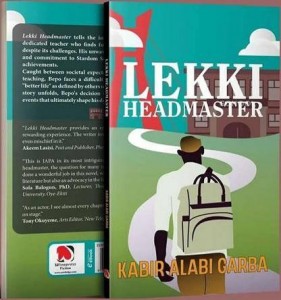Waec

Waec 2023 Literature In English Drama And Poetry Theory Questions And Answers
(12)
The poem “Caged Bird” by Maya Angelou depicts powerful use of imagery, which serves to highlight the stark contrast between freedom and oppression, and to convey the emotional experiences of the caged bird.
Throughout the poem, the poet employs vivid and evocative imagery to draw a parallel between the bird’s physical and emotional confinement. For example, she describes the bird’s wings as “clipped and its feet tied,” symbolizing the restrictions imposed upon it. This visual imagery creates a sense of imprisonment and helplessness, emphasizing the bird’s inability to fly and experience the freedom it desires.
The poet also utilizes contrasting imagery to emphasize the stark divide between the caged bird and its free counterpart. She describes the free bird’s flight as “the orange sun rays beating on its wings,” painting a picture of unbridled movement and the warm embrace of sunlight. In contrast, the caged bird’s experience is characterized by “bars of rage” and a “grave of dreams.” These vivid descriptions evoke a sense of confinement and frustration, emphasizing the emotional toll of captivity.
In addition, the poem’s imagery draws upon natural elements to further enhance its impact. Angelou employs images of a “sighing wind” and a “fat worms waiting on a dawn-bright lawn” to create a vivid sense of the outside world that the caged bird longs for. These natural images serve as symbols of freedom and possibilities, highlighting the stark contrast between the bird’s confined existence and the vastness of the world beyond.
The use of sensory imagery also plays a significant role in the poem. Angelou appeals to the reader’s senses, allowing them to imagine the bird’s experience more vividly. The reader can almost hear the caged bird’s “trill of things unknown” and feel its frustration through the images of the “shadow shouts” and “fearful trill.” These sensory details contribute to the emotional impact of the poem, enabling readers to empathize with the bird’s longing for freedom.
=============================
(11)
“Do not go Gentle into that Good Night” is a powerful and poignant poem written by Dylan Thomas. The poet’s diction in this poem is striking and deliberate, creating a sense of urgency and emotional intensity.
The poet’s choice of words is vivid and evocative, allowing the reader to connect with the poem on an emotional level. The repeated use of the imperative phrase “Do not go gentle” throughout the poem emphasizes the poet’s plea for resistance and defiance in the face of death. The word “gentle” itself conveys a sense of surrender and acceptance, contrasting with the poet’s desire for his loved ones to fight against the inevitable.
Furthermore, the poet employs strong, resonant language to depict various stages of life and the emotions associated with them. He uses contrasting pairs of words to heighten the emotional impact, such as “light” and “dark,” “day” and “night,” and “life” and “grave.” These choices create a sense of tension and emphasize the importance of living fully and passionately, even in the face of death.
The poet’s use of vivid imagery is another noteworthy aspect of the poem’s diction. Thomas employs vivid metaphors and descriptive language to depict different types of people and their attitudes towards death. For instance, he describes “wise men” as “the good,” while “wild men” and “grave men” represent those who have lived passionately or with regret. This imagery adds depth and complexity to the poem, inviting readers to reflect on their own lives and the choices they make.
=============================
(8)
Bono is portrayed as a loyal and committed friend to the protagonist, Troy Maxson. Bono’s dedication to their friendship can be attributed to several reasons such in a way that firstly Bono and Troy have a long history together, spanning many years. They have been friends since their time in prison, and this shared experience has created a bond between them. Bono values their history and the trust they have built over time, which strengthens his commitment to their friendship.
Secondly, on their mutual support as Bono is a constant source of support for Troy, and vice versa. They lean on each other during difficult times, sharing their triumphs and hardships. Bono often acts as a sounding board for Troy’s struggles and offers advice and guidance when needed. This mutual support creates a sense of camaraderie and deepens their friendship.
Thirdly, Bono has a deep understanding of Troy’s flaws, shortcomings, and complexities. Despite Troy’s sometimes difficult and abrasive nature, Bono accepts him for who he is. He recognizes Troy’s humanity and respects his experiences, allowing for a genuine connection based on acceptance and understanding.
Further more Bono is fiercely loyal to Troy. He stands by him through thick and thin, even when Troy’s actions or decisions may be questionable. Bono remains steadfast and committed, demonstrating his unwavering loyalty to their friendship.
Additionally, Bono and Troy share certain values and beliefs. They both have a strong work ethic and a sense of responsibility. They understand the importance of providing for their families and the struggles faced by black men in a racial and more also these shared values further solidify their bond and commitment to each other.
It’s clear that Bono sees beyond Troy’s flaws and remains dedicated to their friendship, embodying the qualities of a steadfast and loyal friend.
=============================
(9)
The poet presents the reader with contrasting emotions throughout the poem. It contains different moods.
The initial two stanzas depict the circumstances leading to the appointment of the “Government Driver” who had diligently served for thirty years and was now retiring.
“…today retires he home…” lines 3
In the following stanza, the poet introduces the reader to the jubilation and delight felt by the driver due to his retirement and the recognition he receives for his dedicated service.
“…more joy to send him home”
“a brand new car in his name…” lines 17-18
The poet initially portrays the government driver’s anticipation and excitement about his retirement. However, there is a sudden shift in mood as the driver’s exhilaration intensifies upon receiving the car gift. This change in mood fuels his rejoicing even further.
…“Come friends and rejoice more, Joy till no more joy to joy…”
In the final stanza, the initial mood of excitement and fulfillment diminishes as the same excitement ultimately leads to the driver’s demise. This turn of events evokes a mood of “pity and shock” as the poem concludes.
The initial excitement that pervaded stanzas 1 to 5 dissipates as the driver indulges in alcohol, impairing his vision and sound judgment.
…”Booze boozed his vision and clear judgement, he boomed his brand new car and it sent him home to rest in peace…”
The poem begins with an exciting narrative, but as the story unfolds, it gradually transitions into a somber and gloomy atmosphere. These two prevailing moods permeate the entire plot of the poem.
(9)


=============================
(7)

=============================
(4)

=============================
(1)


=============================
(3)

(3)
The play opens in the morning, near the village center on the edge of the market. The ‘bush’ school, that is, the village school Lakunle, the school teacher is nearly twenty-three years old, dressed in an “old style and worn-out English suit, rough but not ragged, but clearly “a size or two too small”. Sidi carried a pail of water on her head and Lakunle complains bitterly about such an act because she is at risk of shortening her neck and also because she has exposed her shoulders for everyone in the village to feast his lustful eyes on. Sidi defends such an action when she says at she decides to fold the wrapper high so that she can breathe, and Lakunle insists that she could have worn something on top as most model do. Sidi becomes furious and reprimands Lakunle to desist from being a village gossip and also calls him “the mad man/of llunjunle. because of his meaningless words, but Lakunle is undaunted because he feels that women’s brain is naturally small, women are the weaker sex, only weaker breeds pound yams, bend to plant millet. He foresees that one, two years to come when machines will do those things and he also hints at his intention to turn llunjunle around for good. Sidi becomes fed up with the meaningless dialogue and demands her pail back angrily but debunks the payment of bride price.
Part of Lakunle’s meeting with Sidi is to make known his intention to marry her and she insists that her bride price must be paid according to their custom and tradition and that marrying him without a price would make people think that she is no virgin and that would bring shame to her family.
But Lakunle resists the idea and describes it as a savage custom that is barbaric and uncivilized. He goes further to educate Sidi on the implication of payment of the bride price and his plan. Lakunle calls Sidi a bush and uncivilized girl who does not want to appreciate and accept civilized romance and ideology.
The introductory part of this play between Sidi and Lakunle shows the cultural gap versus modernity.
=============================
Completed
RECOMMENDED TOPICS
- JAMB 2025 UTME/DE registration document – step-by-step on how to apply for UTME and DE

- JAMB postpones 2025 UTME Registration to February 3rd

- JAMB Officially Announces 2025 UTME Registration, Exam, Mock Dates, Cost and Important Details

- The official reading novel for Jamb 2025 is Lekki Headmaster

- Subjects for Computer Science in JAMB for Guaranteed Success


